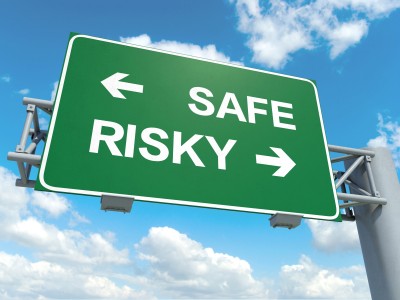There’s yet another study out of Canada demonstrating the safety of homebirth for a subset of low risk women chosen by applying rigorous exclusion criteria. In contrast, every study of American homebirth, as well as state or national homebirth statistics that shows the US homebirth increases the risk of perinatal death.
Why is Canadian homebirth safe but American homebirth dangerous? The answer can be found in the paper, Outcomes associated with planned place of birth among women with low-risk pregnancies. Simply put Canadian midwives have far greater respect for the inherent dangers of childbirth than American homebirth midwives* (CPMs, LMs).
[pullquote align=”right” color=”#228149″]The Canadian system is predicated on the assumption that birth is untrustworthy.[/pullquote]
Let’s look first at what the researchers found:
Results: We compared 11 493 planned home births and 11 493 planned hospital births. The risk of our primary outcome did not differ signi cantly by planned place of birth (rela- tive risk [RR] 1.03, 95% con dence interval [CI] 0.68–1.55). These ndings held true for both nulliparous (RR 1.04, 95% CI 0.62–1.73) and multiparous women (RR 1.00, 95% CI 0.49–2.05). All intrapartum interventions were lower among planned home births.
Interpretation: Compared with planned hospital birth, planned home birth attended by midwives in a jurisdiction where home birth is well-integrated into the health care system was not associated with a difference in serious adverse neonatal outcomes but was associated with fewer intrapartum interventions.
The results reflect the many restrictions placed on homebirth in Canada.
1. Canadian midwives have far more education and training than American homebirth midwives. Canadian midwives must have a university level midwifery degree and extensive in hospital and out of hospital training. American homebirth midwives, in contrast, are really just lay people who awarded themselves a bogus credential that can be obtained with a period of unmonitored study and apprenticeship. American homebirth midwives have such ludicrously low standards that they had to “strengthen” them in September 2012 to mandate a high school diploma.
2. There are strict risk criteria for homebirth eligibility. Women with breech, twins, medical complications of pregnancy, pre-existing medical conditions and more than one previous C-section are not eligible for homebirth in Canada. Therefore, homebirth takes place within a well regulated medical system, not outside it and not in opposition to it.
3. Transfer rates are high. More than 45% of first time mothers were transferred to the hospital for an overall transfer rate of 24%. Transfer is undertaken if complications might occur. The threshold for transfer is remarkably low in contrast to American homebirth where the threshold for transfer is dangerously high, often not occurring until complications happen.
4. Homebirth is integrated into the medical system because Canadian midwives are integrated into (and regulated by) the medical system. American homebirth midwives are a second, substandard class of midwives that exist because they couldn’t or wouldn’t meet the standards of the medical system.
5. Childbirth is recognized as inherently dangerous. This is the key point. No one trusts birth; everything is predicated on the assumption that birth is untrustworthy. Safety is ensured NOT by managing complications at home, but by making sure that complications do not happen far from expert medical assistance of obstetricians and pediatricians. Nearly everyone who is at higher risk for complications is excluded a priori. Care during labor involves prompt transfer of anyone who might develop a complication. Strict education and training standards ensure that midwives have the experience to recognize impending complications instead of waiting for them to occur. Integration within the healthcare system means that there is no financial incentive for Canadian homebirth midwives to keep women at home as opposed to transferring them to the hospital.
What would we need to do if we wanted American homebirth to be as safe as Canadian homebirth? It’s pretty simple:
- Abolish the CPM and restrict midwifery to people with university level midwifery degrees.
- Enforce strict eligibility criteria for homebirth.
- Exclude from homebirth anyone at increased risk of complications.
- Transfer at the first sign of potential problems.
- Require homebirth midwives to have hospital privileges.
Canadian midwives have shown that homebirth can be safe IF complications are expected and patients are transferred before complications occur. It has also demonstrated why American homebirth will NEVER be safe as long as we allow poorly educated, poorly trained lay people to award themselves counterfeit midwifery credentials and use those credentials prey on American mothers and babies.
*As distinguished from real American midwives (CNMs, certified nurse midwives).


